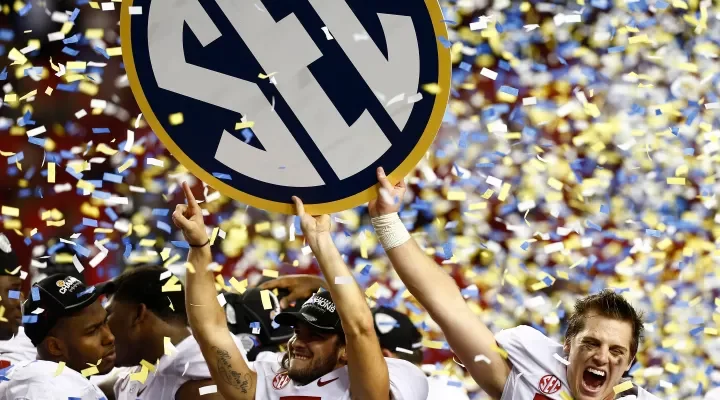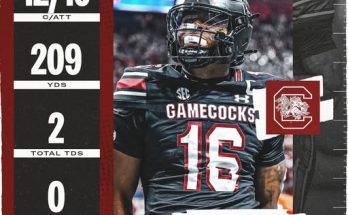What Really Happened to Auburn? Inside the Shocking Collapse of a Once-Powerhouse Program as Georgia and Bama Took Over the SEC Throne
Something seismic has shifted in the world of SEC football—and Auburn fans know it better than anyone. The Tigers, once perched firmly in college football’s elite circle, have seen their prominence fade dramatically in recent years. Once fierce contenders for national championships, they’re now watching bitter rivals Georgia and Alabama rise to unprecedented heights while struggling to find their own footing. The fall hasn’t been overnight—but it’s been undeniably steep, and the timing of Auburn’s collapse has eerily mirrored the dominant ascents of the Georgia Bulldogs and Alabama Crimson Tide. For a fanbase that once roared with confidence, the silence is now deafening. And the question echoing across the Plains is a painful one: How did it come to this?
The Auburn Tigers were never strangers to chaos—that’s part of what made them so thrilling to follow. One year, they’d be competing for a national title; the next, spiraling into staff changes, offensive overhauls, or locker room turmoil. But what’s happened in the last several years goes beyond inconsistency. It’s systemic, it’s strategic, and it’s deeply tied to the changing power dynamics in the SEC. While Auburn has struggled to find continuity, identity, and long-term vision, Georgia and Alabama have built dynasties. While the Tigers have churned through coaches and quarterbacks, Kirby Smart and Nick Saban have stacked recruiting wins, developed NFL-caliber talent, and redefined what dominance looks like in the modern era of college football.
Let’s start with Alabama. The Crimson Tide’s rise under Nick Saban didn’t just hurt Auburn—it cast a shadow so long and so strong that it shook the entire SEC. Saban’s relentless recruiting machine, his no-nonsense development pipeline, and his unmatched ability to adapt to modern offensive trends have turned Alabama into the gold standard. Every SEC team measures itself against Alabama, and for Auburn, that proximity has been both a blessing and a curse. The Iron Bowl rivalry once felt like a coin flip—an anything-can-happen grudge match with national implications. But recently, it’s been more of a measuring stick—and Auburn hasn’t measured up. Repeatedly. The widening gap between the two programs isn’t just about wins and losses—it’s about infrastructure, culture, and execution at every level.
At the same time, Georgia’s emergence under Kirby Smart has added insult to injury. Georgia has evolved from a “close but not quite” program to a certified juggernaut. Smart learned from Saban, but he added his own aggressive recruiting flair and brought a defensive mindset that turned the Dawgs into a menace. Georgia now sits atop the college football mountain, and their grip on the SEC East has been ironclad. The Bulldogs have won national titles, produced first-round NFL talent like a factory, and attracted top recruits from across the country. Meanwhile, Auburn has watched, often from the sidelines, as its two biggest rivals have become the faces of college football’s elite.
Auburn’s own issues have only accelerated this descent. Coaching instability has been a recurring theme. Gus Malzahn brought hope and even played for a national title, but his tenure ended in mediocrity and fatigue. The Bryan Harsin experiment was a disaster from the start—his cultural disconnect with the SEC and poor roster management turned into a ticking time bomb that exploded in full view. Hugh Freeze, now tasked with righting the ship, inherited a program riddled with cracks and inconsistencies. And even with Freeze’s recruiting prowess and offensive mind, the rebuild is proving harder than expected. The talent gap is real. The confidence gap may be even worse.
Behind the scenes, Auburn’s struggles with alignment—between administration, boosters, athletic directors, and coaching staffs—have created a toxic cycle of short-term thinking and reactionary moves. While Alabama and Georgia operate with a singular, focused vision from top to bottom, Auburn has been plagued by internal power struggles, shifting priorities, and a lack of patience. It’s hard to build a long-term powerhouse when the foundation keeps shifting underneath. Players feel it. Recruits sense it. Fans see it. And the results speak volumes.
The recruiting trail is where the consequences become most obvious. Alabama and Georgia routinely sit at the top of the national rankings, stacking five-star prospects and filling depth charts with future pros. Auburn, meanwhile, has found itself chasing shadows—losing key in-state battles, failing to close on blue-chip talent, and relying too heavily on the transfer portal just to fill roster gaps. In today’s game, elite recruiting is non-negotiable. And while Freeze is making strides, the hole Auburn has to dig out of is deeper than many realize.
And it’s not just about talent. It’s about development. It’s about culture. It’s about consistency. Georgia and Alabama players enter the program knowing they’ll be coached hard, prepared relentlessly, and put in position to succeed. Auburn, over the last several years, has lacked that same clarity. Coaching turnover has led to scheme changes, mixed messages, and a revolving door of position coaches. Young players need development pipelines. Auburn hasn’t had them. And without that, even the occasional four-star pickup gets lost in the shuffle.
The emotional toll on the fanbase has been significant. Auburn fans are some of the most passionate in college football, but even the most loyal supporters are growing weary. The Iron Bowl no longer feels like a clash of titans—it feels like damage control. Games that used to carry playoff implications now feel like uphill battles just to reach bowl eligibility. And when your fiercest rivals are hoisting trophies while you’re stuck trying to stay afloat, the frustration boils over.
But here’s the thing about Auburn—and why this story isn’t finished yet. The Tigers may be down, but they’re never out for long. This program has rebounded before. It’s risen from chaos to championship contention more than once. It’s knocked off dynasties, spoiled seasons, and produced legends. The DNA is still there. What’s missing right now is direction, identity, and time. Freeze needs time. Auburn needs alignment. And the players need belief. Because while the rise of Georgia and the sustained greatness of Alabama have created the toughest neighborhood in college football, Auburn has always been at its best when it’s counted out.
The Tigers’ demise in recent years is undeniable, but it’s not irreversible. However, make no mistake—the clock is ticking. The longer Auburn lingers in mediocrity, the harder it becomes to catch up. The program must stop the bleeding, solidify its recruiting base, and re-establish itself as a place where elite talent thrives and big games are expected, not hoped for. That process won’t be easy. But Auburn fans have seen it before. They know what’s possible. They just need to see a real plan, a real identity, and real results.
Until then, the Tigers remain caught in the shadow of their two greatest rivals—watching Georgia redefine dominance and Alabama reload like clockwork. For now, Auburn is no longer in the spotlight. But in college football, things change fast. And when they do, don’t be surprised if the roar from the Plains returns louder than ever.
If you’re an Auburn fan—or a college football fan who thrives on the chaos, comebacks, and rivalries that make the SEC great—stick with us. The story of Auburn football is far from over, and when the next chapter begins, you’ll want to say you saw it coming.



